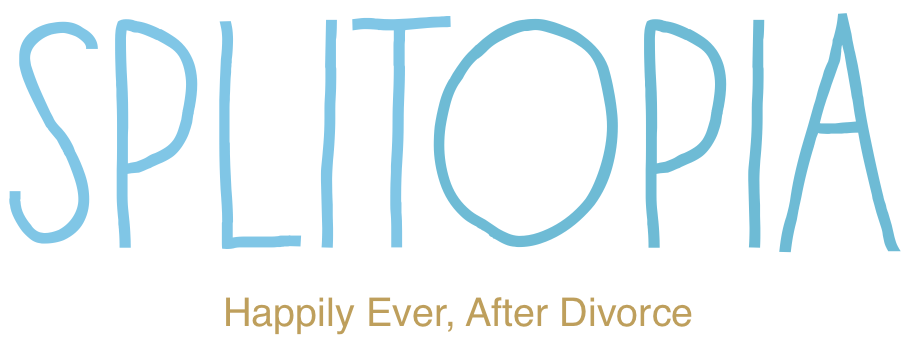Why a Hollywood Ending Matters in This Divorce
/Yesterday, while buying Froot Loops for my son, I saw a cover story in InTouch magazine about the Brangelina break-up proclaiming it a: "$400 Million Divorce!" I was instantly incensed. Not about how much money this couple managed to amass while I, meanwhile, was still stressed out by the price of breakfast cereal, but rather by the sloppy reporting conflating success in a marriage with the ills of divorce.
False headline fans fears of bad divorce.
This is not a $400 million divorce. This was a multi-million-dollar marriage. That difference is critical.
A $400 million divorce would mean these two superstar celebs were letting their emotions run wild in divorce to the tune of $400 million spent in lawyers fees, forensic psychology exams, forensic accounting, etc.
One thing we know about divorce: the more you spend, the less you get.
The stakes are high here—not only for the two actors and their six children but also for a culture that takes its cues from stars. Pitt and Jolie are also known for their global humanitarianism and very public efforts to usher in expansive new thinking about family life.
The assumption that they’ll drop their values and become raging lunatics of hate, just because they’re divorcing, is demeaning to them and to the two million Americans who will divorce this year.
It’s also dangerous, because the expectation that divorce must be a tragedy for all involved can create just that outcome. It’s time to update our understanding of divorce to reflect today’s new reality and stop encouraging the worst by expecting it.
A piece earlier in the week in People.com focused on an accusation that Pitt hit one of their children in a fight with Jolie. There’s a mention of the L.A. County Department of Children and Family Services.
This is also exactly the kind of conversation we do not want to have about the biggest celebrity divorce in decades. Of course, children need to be protected from violent parents, and in divorce, emotions run high. This gossip, however, didn’t reflect some secret, collective knowledge about Pitt’s parenting style, but rather our negative, limited misunderstanding of divorce—a dated view that is destructive to this couple and to family life at large.
This old vision—that there must be a villain in divorce—may make good copy, but it creates terrible lives. Certainly people lose sight of their highest selves in divorce. But we've reached a tipping point in our understanding of divorce and child development. Forty years of research shows that high conflict is what damages children most, whether their parents are divorced or married. New laws, new forms of legal support, and court-based services are helping people end their marriages without destroying their families.
Nearly every state now has short parenting classes for separating and divorcing couples, an innovation that took off in the 1980s and ’90s as a way to prevent conflict before it began. An increased understanding of the importance of fathers means dads typically remain far more involved today than in the 1970s, when divorce rates first rose.
Every state now authorizes joint custody, and 16 have a presumption for it. Joint custody need not mean the children must go back and forth between two homes every week. Nor does a parent asking for sole physical custody, as Angelina Jolie has done, prove she wants to fight. Joint custody means that fathers have a legal say—a real role in making decisions.
No-fault divorce, introduced in California in 1970 and finally passed in New York in 2010—the last state to adopt it—has led to the development of "alternative dispute resolution" processes such as mediation and collaborative divorce, methods that enable couples to work together to come apart. These processes actually help couples build new communication skills and can improve a relationship on the other side of marriage.
The family law reform movement in the U.S. is focused on empowering parents—not judges—to make decisions for their families, and to remove most divorces from court altogether. Many lawyers offer “unbundled” services, one-off consultations to help families learn the law and make good choices. Private companies have also gotten in on the effort to help separating and divorcing couples manage their emotions and move on with their lives. There are now divorce coaches, online co-parenting calendars and child-support processing sites—even apps with “tone meters” to flag hostile communiques.
Gwyneth Paltrow’s high-profile conscious uncoupling, despite the snark it engendered, reflects the new thinking about divorce. Still, nasty divorces remain all too common. Many couples still rush to make it legal before the fog of hurt and resentment clears. In their anger and confusion, they hire old-style adversarial lawyers before giving the collaborative approach a try. Litigators focus on points they can best argue and win—such as an accusation of violence—often losing sight of what actually matters to the couple and hijacking any attempt to part peaceably.
Divorce touches three-quarters of Americans. The divorce rate is rising around the world, as are the number of unmarried co-parents who split.
We need to update our understanding of romantic break-down and take a compassionate, supportive view of those facing it. One place to start is by not projecting the worst on the celebs we admire.
***
Wendy Paris is the author of Splitopia: Dispatched from Today's Good Divorce and How to Part Well (Simon & Schuster/Atria, 2016). Splitopia and her work on divorce have been covered by The New York Times, Real Simple, The Washington Post, The New York Post, The Globe & Mail, Psychology Today, The Houston Chronicle, Salon.com, Parents.com, Family Law Quarterly, Psychcentral.com and radio and TV shows nationwide. She has an MFA in creative nonfiction writing from Columbia University, and is an advocate for family law reform. She is divorced, and lives in Santa Monica, California, a few blocks from her former husband, with whom she has a warm co-parenting relationship.

























